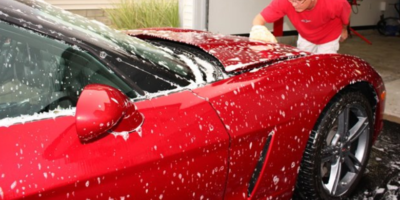Shootin’ n snaggin’ with the Frugal Fisherman
If you are anything like me, you wake up one morning, you catch the weather, and somewhere between your first and fourth cups of coffee, you decide today would be a great day to go fishing. You grab your tackle box, a couple rods n reels and some water. You fling the kayak on top the car and you are off.
At least that is how many a fishing outing begins at my house, which isn’t to say I have always had success with such spontaneity. In fact, I’ve had many a D’oh moment that could have easily been prevented with the slightest bit of planning and attention to detail.
One such quick and easy facet in making sure your first and subsequent fishing experiences go off without a hitch is to check your equipment. I am not just talking about organizing your tackle box; I’m referring to going over your rod n reel from tip to butt.
Beyond the actual fishing lure and knot, no two factors are more integral in actually hooking and retrieving a fish then your rod n reel. (Well, you do have to locate and target a fish, but that is a story for another day.)
Today let’s talk about your rod specifically. The modern fishing rod comes in all kinds of lengths, styles and variations. Besides the cane pole, though, all rods share the same construction characteristics: a handle, reel seat, guides and the actual rod itself.
To ensure your rod is working properly, follow these six quick and easy steps:
Clean your fishing rod. Many freshwater fishermen fail to realize that algae and silt from ponds, lakes and rivers can harm the rod’s guides and handle. Dampen a cloth with tap water and wipe the rod over completely from top to bottom. Make sure to clean each guide thoroughly.
Check your cork. If your rod has a cork handle make sure the cork isn’t cracked, dry rotted or damaged. Wipe the cork thoroughly with water and apply a simple conditioner like U-40. For synthetic handles simply clean with a damp cloth and dry.
Check guides for cracks or irregularities. Make sure each guide feels smooth inside each circle. Look at the base of each guide to make sure that each is tightly fitted to the pole and there are no cracks in the fiberglass coating or epoxy attaching the guide to the rod. If a guide is broken, irregular or isn’t smooth you can replace it. The tip is easier to replace than the line guides. But neither is very tough or time consuming.
Replacement guides can be purchased at most any tackle or fishing purveyor. Each replacement guide usually comes with everything you need to finish the job, such as windings and epoxy. If the guide cannot be replaced or the guide has damaged the rod as well, you will need to buy a new rod altogether or have a specialist fix the problem.
Clean the reel seat. When it comes to the reel seat, detach the reel from the pole and inspect the pole underneath as well as the mechanics used to attach the reel itself. Wipe the reel seat clean with tap water and a damp cloth and make sure there are no easily discerned cracks or loose parts.
Reattach the reel and make sure it feels snug and secure to the handle. If for any reason it doesn’t, make sure you have tightened the handle properly. If in fact it is tight and the reel still seems loose, this could be a clear sign the pole has been damaged. Consult a specialist if the pole is of value, or else simply buy a new rod.
The pole itself. Now that the handle, reel seat and guides have been inspected it’s time to go over every inch of the pole itself. Look at connection areas such as between the handle and pole’s butt. Make sure nothing feels loose or irregular. Look for any damage such as cracks or stress fractures along the poles length.
And give the rod a good bend or two. Be sure to listen for any cracking or popping sounds. If you hear anything at all it probably means the rod is shot. Once again if the pole is of value consult a specialist; otherwise it’s time to grab the wallet and make a purchase.
Storage is key. At this point the rod should be ready for another season of fishing. But in addition to maintenance here are some suggestions for storing your poles. Try not to carry your rods in bundles. This can cause wear and excessive rubbing, which weakens the rod’s construction. Remove hooks or lures after each fishing outing. Hooks are prone to damaging and scratching guides.
Avoid permanent bows or bends in your rods. A bowed pole that sits over winter can start to lose its elasticity, thereby affecting the rod’s action. Lastly, avoid storing your poles in direct sunlight or in extremely hot temperatures. Heat and sunlight causes everything from dried out handles to fading and dry rotting.
I’ll be the first to say I don’t always maintain my poles as I should. But at the very least give your poles a good cleaning and inspection at the beginning of each season. It just might save yourself some pain and suffering when you hook into that big one.
Stay tuned for part 2 of this series where I’ll go over reel maintenance. If you have any questions, concerns or advice please contact me at frugalfisherman1@gmail.com.







Leave a Reply